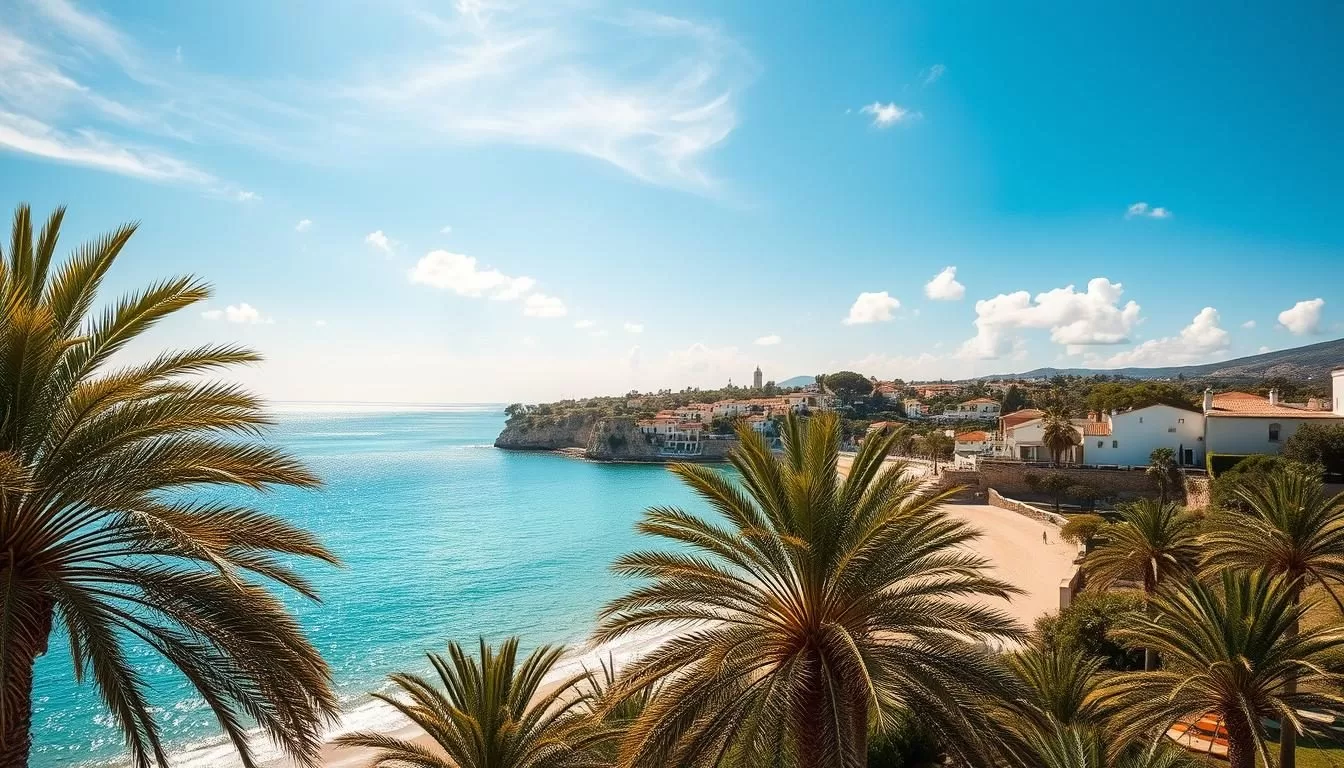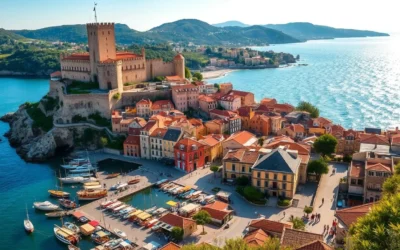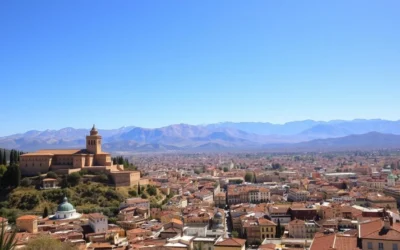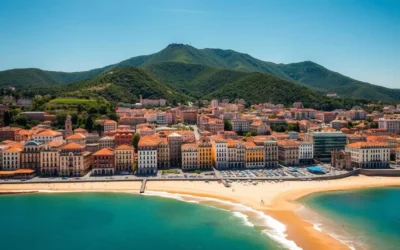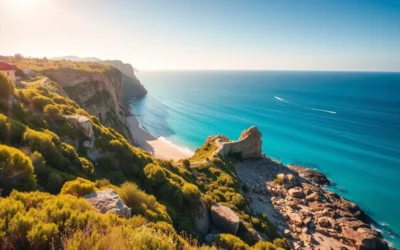✓ Accommodations✓ Flights✓ Rental Cars✓ Tours & Activities
Planning a trip to Mallorca can be a delightful experience, especially when you consider the island’s pleasant weather year-round. With mild winters and warm summers, the Mediterranean archipelago is a perfect destination for travelers seeking sunshine and relaxation.
You’ll discover that Mallorca’s climate creates ideal conditions for visitors throughout the year, with over 300 days of sunshine annually. Whether you’re looking for beach relaxation, hiking, or cultural experiences, the island has something to offer. By understanding the distinct seasonal patterns, you can determine the optimal time for your visit based on your weather preferences and desired activities.
This guide will help you plan a weather-savvy trip to Mallorca, balancing good weather with crowd levels and pricing to create your perfect Mallorcan experience.
Understanding Mallorca’s Mediterranean Climate
Understanding the weather patterns in Mallorca is crucial for planning an ideal trip. Mallorca, part of the Balearic Islands, enjoys a classic Mediterranean climate, characterized by hot, dry summers and mild, occasionally rainy winters.
The Balearic Islands Weather Patterns
The Balearic Islands’ location in the Mediterranean Sea creates a unique weather pattern that attracts visitors year-round. The temperatures across the islands generally reach the high 80s F (30.5°C) during the summer months, with lows in the 60s F (15.5°C) at night. Spring and fall see temperatures in the 70s F (21°C), while winter averages out in the low 60s F (15.5°C).
| Season | Daytime Temperatures | Nighttime Temperatures |
|---|---|---|
| Summer | High 80s F (30.5°C) | 60s F (15.5°C) |
| Spring/Fall | 70s F (21°C) | – |
| Winter | Low 60s F (15.5°C) | – |
How Geography Shapes Mallorca’s Microclimates
Mallorca’s diverse geography, particularly the Serra de Tramuntana mountain range, creates distinct microclimates across the island. This variation means that coastal areas can experience different weather patterns compared to inland regions, influencing where you might want to stay during your visit at any given time. Understanding these patterns will help you pack appropriately and plan activities that align with the weather conditions during your chosen travel time, enhancing your overall experience.
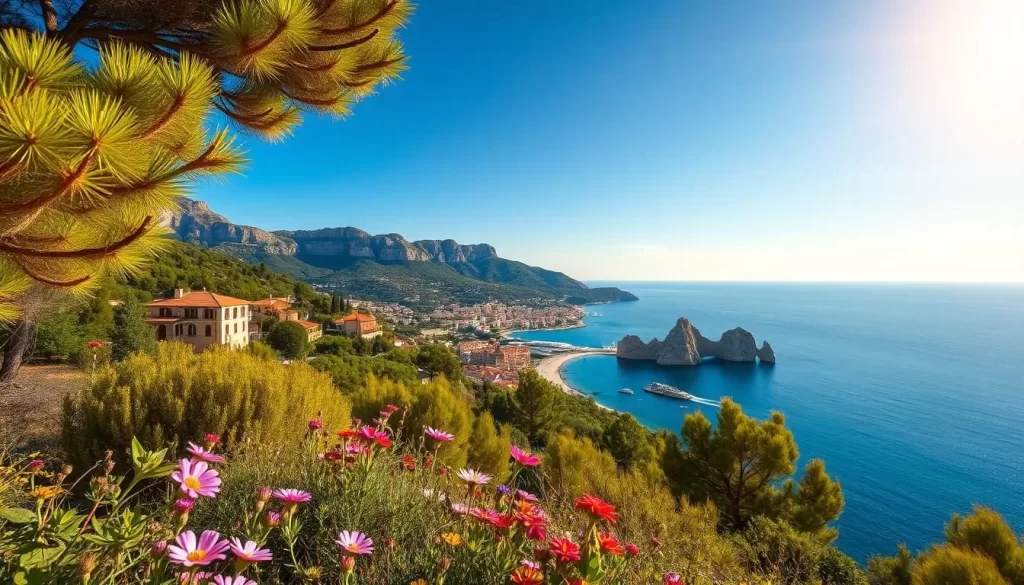
By grasping Mallorca’s climate and weather nuances, you can make informed decisions about the best season to visit, ensuring a more enjoyable trip.
Seasonal Overview: What to Expect Year-Round
To make the most of your visit to Mallorca, it’s essential to understand the seasonal weather patterns. The island experiences a Mediterranean climate, characterized by distinct seasonal changes that influence the type of activities you can enjoy and the overall experience.
Spring in Mallorca (March-May)
Spring is a magical time year to explore Mallorca. With average temperatures ranging from the low to mid-70s, the weather is ideal for outdoor activities. March starts with mild days, while May brings warmer afternoons perfect for beach strolls. Rainfall is minimal during spring, making it a great time for hiking and sightseeing. The landscapes come alive with vibrant flowers, and the crowds are smaller compared to summer.
Summer in Mallorca (June-August)
Summer offers hot, sunny days with temperatures often reaching the high 80s F (30°C), perfect weather for beach activities. However, it’s also the peak tourist season, bringing higher prices and larger crowds.

Autumn in Mallorca (September-November)
Autumn is another fantastic time year to visit. The temperatures are mild, averaging in the mid-70s, and the summer crowds have thinned out. September and October may bring sporadic rain, but the lush landscapes are worth it.
Winter in Mallorca (December-February)
Winter reveals a different side of Mallorca with mild temperatures around 60°F (15°C), occasional rainfall, and a more authentic local experience with significantly fewer tourists.
| Season | Months | Average Temperature | Crowd Level |
|---|---|---|---|
| Spring | March-May | Low to mid-70s F | Low |
| Summer | June-August | High 80s F | High |
| Autumn | September-November | Mid-70s F | Medium |
| Winter | December-February | Around 60°F | Low |
Each season offers distinct advantages and potential drawbacks, from weather conditions to crowd levels. Understanding these factors will help you choose the perfect time year for your visit based on your preferences.
Peak Season (June-August): Sun, Crowds, and Higher Prices
June through August is considered peak season in Mallorca, with the island being bustling with tourists enjoying the warm climate. This period is characterized by hot temperatures, minimal rainfall, and a vibrant atmosphere as the island caters to the influx of visitors.
Weather Conditions During Summer Months
During the summer, Mallorca experiences consistently hot temperatures, often reaching the high 80s F (around 30°C), making it ideal for beach activities and swimming. The sea temperatures are warm, and the minimal rainfall ensures that the weather is mostly sunny.
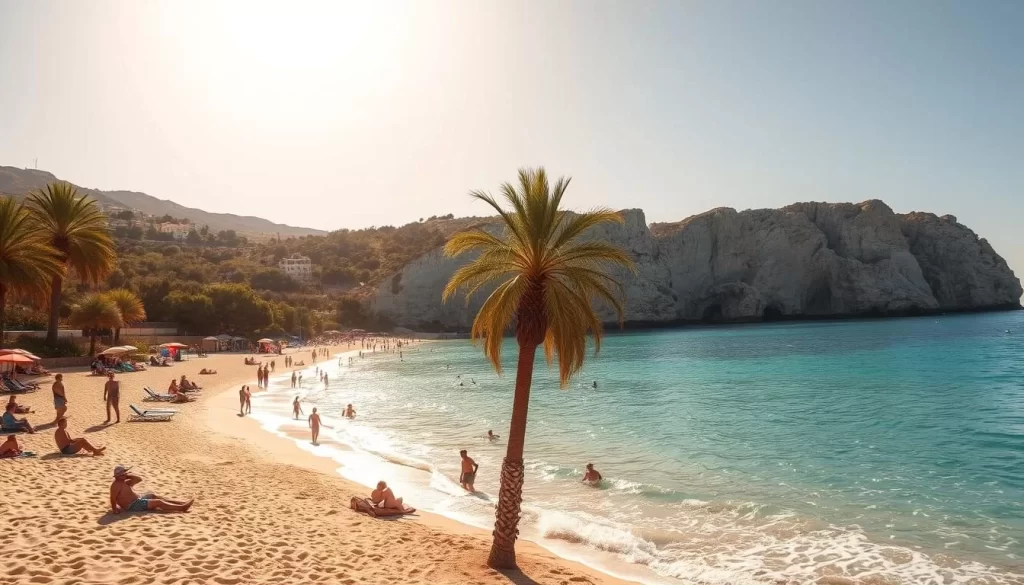
Pros and Cons of Visiting During Peak Season
Visiting Mallorca during peak season has its advantages, including perfect beach weather and a wide range of tourist activities. However, it also means dealing with crowds and higher prices for accommodations and tourist services. You should weigh these factors based on your preferences.
Tips for Managing Summer Crowds
To make the most of your visit during peak season, consider visiting popular attractions early in the morning or exploring lesser-known areas of the island. Renting a car can be advantageous for discovering secluded spots away from the main tourist hubs. Additionally, making reservations for restaurants and activities well in advance can save you time and ensure availability.
Shoulder Seasons (April-May & September-October): The Sweet Spot
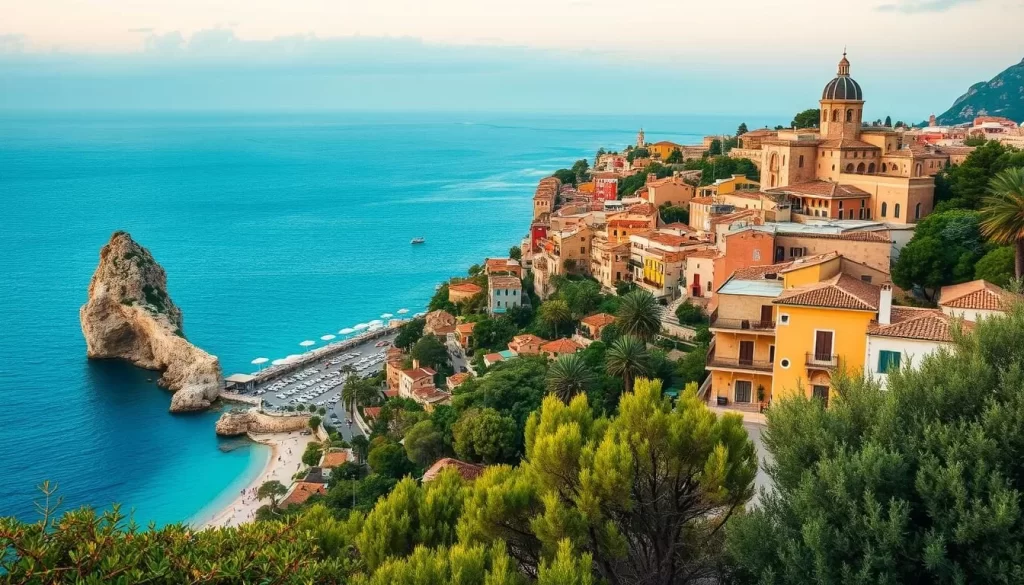
Visiting Mallorca during the shoulder seasons can be a game-changer for travelers seeking a balance between pleasant weather and manageable crowds. The periods of April-May and September-October are particularly appealing, offering a unique blend of advantages that make them the best time to visit.
Spring Shoulder Season Benefits
The spring shoulder season brings warming temperatures, ranging from 65-75°F (18-24°C), and blooming landscapes, creating perfect conditions for exploring the island. As spring progresses, the sunshine hours gradually increase, making it ideal for outdoor activities and enjoying the beach. With fewer crowds, you can experience a more authentic side of Mallorcan life, and accommodation prices remain relatively lower than during peak season.
Fall Shoulder Season Advantages
The fall shoulder season extends summer’s warmth, with temperatures still reaching the 70s-80s F (21-27°C), while the Mediterranean Sea remains warm enough for swimming after heating all summer. This period offers a great opportunity to enjoy the island’s attractions without the peak season crowds, resulting in a more relaxed travel experience. Moreover, accommodation prices start to drop, making it an attractive time to visit Mallorca.
Both shoulder seasons offer significant advantages, including fewer crowds at restaurants and attractions, allowing for a more leisurely exploration of the island. By considering these transitional seasons, you can determine if they might be the perfect time for your Mallorca adventure, especially if you value both good weather and a more relaxed travel experience.
Off-Season (November-March): Mild Winters and Local Experiences
Mallorca transforms during the winter months, providing an authentic local experience. The island takes on a serene atmosphere as the summer crowds dissipate, revealing a more genuine side of Mallorca.
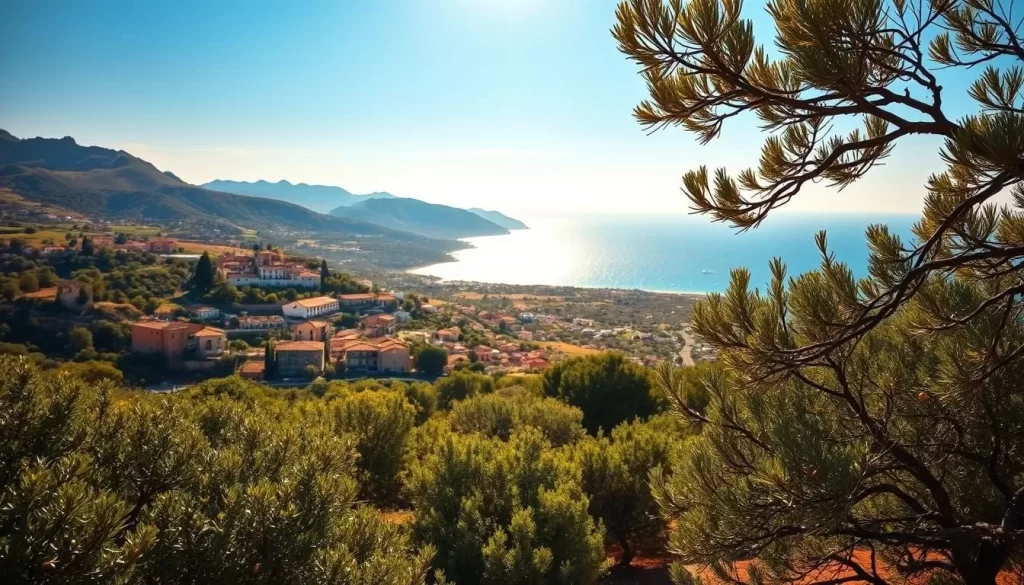
Winter Weather Expectations
During the off-season, Mallorca experiences mild winters with average temperatures ranging from 50-60°F (10-15°C). While there may be occasional rainfall and cooler evenings, the island still enjoys plenty of sunny days, making it a pleasant destination even in winter.
Benefits of Off-Season Travel
Traveling to Mallorca during the off-season comes with several benefits. You can expect substantially lower accommodation prices, often 50-70% less than peak season rates. With fewer crowds, you’ll have a more authentic experience, allowing for a deeper connection with the local culture and traditions.
- Lower accommodation prices
- Fewer tourist crowds
- A more genuine connection with local culture
Activities Available During Winter Months
Despite the cooler weather, there’s still plenty to do in Mallorca during the winter. You can explore the Serra de Tramuntana mountains, which are particularly lush after rainfall, or visit museums, historic sites, and local markets without the crowds. Additionally, winter is an excellent time to experience Mallorca’s traditional festivals, including Christmas celebrations and carnival events in February.
- Hiking in the Serra de Tramuntana
- Exploring museums and historic sites
- Visiting local markets
- Experiencing traditional festivals
Mallorca, Spain: Best Months for a Weather-Savvy Trip
The best months to visit Mallorca are those that strike a perfect balance between pleasant weather and manageable tourist numbers. This balance is crucial for a fulfilling experience on the island.
May-June: Ideal Weather Without Peak Crowds
Visiting Mallorca in May and June is ideal for those seeking pleasant weather without the peak season crowds. During these months, temperatures range from 70-80°F (21-27°C), with increasing sunshine hours and a landscape still lush from spring rains. May, in particular, offers several advantages: it’s warm enough for beach days, perfect for hiking and sightseeing, and the almond trees and wildflowers are in bloom. Moreover, prices for accommodations are still in the pre-season range, making it an attractive time to visit.
September: Post-Summer Perfection
September stands out as another excellent month to visit Mallorca. The island enjoys summer-like temperatures, and the Mediterranean Sea is at its warmest after heating up all summer. As families return home for school, there’s a noticeable decrease in crowds, making it easier to explore the island’s diverse attractions. The pleasant weather, combined with fewer tourists, makes September a perfect time to experience all that Mallorca has to offer without the drawbacks of extreme heat or overwhelming tourist numbers.
By choosing to visit during these months, you can maximize your enjoyment of Mallorca’s beautiful landscapes, rich culture, and vibrant atmosphere. Whether you’re looking to relax on the beach, explore historical sites, or engage in outdoor activities, May, June, and September provide the ideal conditions for a memorable trip.
Beach Lover’s Calendar: When to Enjoy Mallorca’s Coastline

As you plan your trip to Mallorca, understanding the island’s beach calendar can make all the difference in your coastal adventures. The island’s diverse coastline offers a range of experiences, from secluded coves to lively resort beaches.
Best Months for Swimming and Sunbathing
The prime beach season in Mallorca extends from June through September, with July and August offering the warmest sea temperatures (around 75-80°F/24-27°C) and virtually guaranteed sunny days for perfect beach weather. If you’re looking for a more relaxed atmosphere, consider visiting in June or September when the crowds are smaller.
Water Temperature Throughout the Year
The weather and season significantly affect the beach experience in Mallorca. The Mediterranean Sea temperatures vary throughout the year, from cooler winter waters (around 57-60°F/14-15°C) to the peak warmth in late August and early September. May and October serve as transitional months, with May offering increasingly warm conditions and October still providing swimming opportunities as the sea retains summer‘s heat.
By understanding the best time to visit and the months that offer the ideal weather conditions, you can plan your beach activities to make the most of your trip to Mallorca.
Outdoor Activities and Weather Considerations
Mallorca’s diverse landscape offers a range of outdoor activities that are weather-dependent, making it essential to choose the right time for your adventure. The island’s varied terrain and climate mean that different activities are suited to different times of the year.
Hiking in the Serra de Tramuntana
Hiking in the Serra de Tramuntana, a UNESCO World Heritage site, is best enjoyed during spring (April-May) and fall (September-October) when temperatures are mild, ranging from 60-75°F (15-24°C). This makes it perfect for exploring these magnificent mountains without the intense heat of summer. The trails are less crowded during these periods, enhancing your hiking experience.
Cycling Across the Island
Winter and early spring offer excellent conditions for cycling across Mallorca, with professional teams often training on the island during these seasons due to the mild temperatures and quieter roads. The average temperatures during this time are ideal for activities like cycling, making it a great time to explore the island on two wheels.
Water Sports and Sailing Seasons
Water sports enthusiasts will find that summer is ideal for paddleboarding and kayaking in calm waters. In contrast, spring and fall often provide better wind conditions for sailing and windsurfing. Understanding these weather considerations can help you plan your activities and make the most of your travel experience.
| Activity | Best Time | Weather Conditions |
|---|---|---|
| Hiking | Spring (April-May), Fall (September-October) | Mild temperatures (60-75°F / 15-24°C) |
| Cycling | Winter, Early Spring | Mild temperatures, quieter roads |
| Water Sports | Summer (paddleboarding, kayaking), Spring/Fall (sailing, windsurfing) | Calm waters, favorable wind conditions |
Cultural Events and Festivals by Season
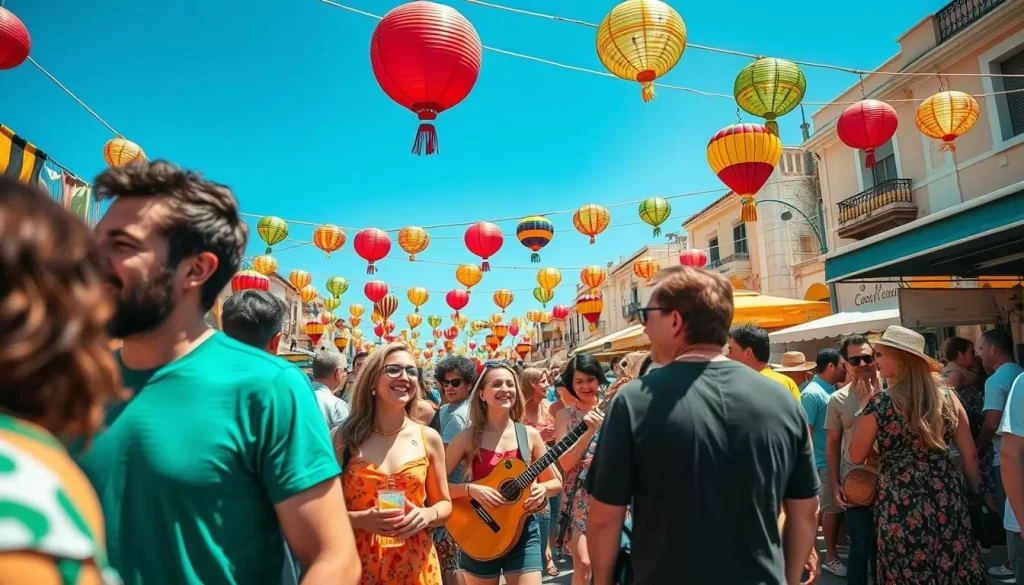
From spring to winter, Mallorca’s festivals and cultural events showcase the island’s history, music, and local culture. You’ll discover how these events can enhance your travel experience throughout the year.
Spring Celebrations
Spring in Mallorca is a time of vibrant celebrations, including the elaborate Holy Week (Semana Santa) processions in April, the colorful May Day festivities, and the Festa de Nostra Senyora de la Victoria in Sóller, which commemorates a 16th-century military victory with mock battles. The Day of the Balearic Islands on March 1st is another significant event, with street parties, gastronomic events, and free entry to many museums and cultural sites.
Summer Festivals
Summer brings the island to life with festivals like Sant Joan on June 23rd, marked by bonfires on beaches, and the Virgen del Carmen maritime procession in July. The Pollença Music Festival, running since 1962, is a must for classical music fans, while the Festes de la Terra in Ibiza Town offers a two-week celebration with concerts, fireworks, and traditional dancing.
Autumn and Winter Events
Autumn and winter reveal a more authentic side of local culture, with events like the Dijous Bo fair in Inca, traditional Christmas celebrations, and January’s Sant Antoni and Sant Sebastià festivals, featuring bonfires, demons, and the blessing of animals. These cultural events provide a window into Mallorcan traditions and create a vibrant atmosphere that goes beyond the typical tourist experience.
Budget Considerations: How Seasons Affect Pricing
The cost of your Mallorca trip largely depends on the time of year you choose to visit. Understanding the seasonal fluctuations in pricing can help you plan a trip that aligns with your budget constraints. Mallorca’s tourism industry experiences significant variations in costs across different seasons, impacting various aspects of your travel.
Accommodation Price Fluctuations
Accommodation prices in Mallorca fluctuate significantly throughout the year. Peak season, which includes July and August, sees rates that are often 50-100% higher than those during the off-season (November-March). In contrast, the shoulder seasons (May-June and September-October) offer moderate pricing with excellent value. For instance, January is a quiet month with reduced accommodation rates, making it an ideal time for budget travelers to experience the authentic life of the archipelago.
Flight Costs Throughout the Year
Flight costs to Mallorca also vary by season. Summer flights from the US typically cost 30-40% more than winter flights. However, booking 3-6 months in advance can secure better deals regardless of the season. Being flexible with your travel dates can lead to significant savings on flights.
Dining and Activity Pricing by Season
Dining and activity prices shift seasonally as well. Many restaurants offer special menus and deals during the off-season to attract business, while summer brings premium pricing at popular establishments. Traveling during less busy periods not only saves money but often provides a better overall experience with more attentive service and fewer crowds at attractions.
By understanding these seasonal price fluctuations, you can determine the best time to visit Mallorca based on your financial considerations. Whether you’re looking for the best deals or prefer to travel during peak season, being informed will help you make the most of your trip.
Conclusion
Now that you’ve explored the intricacies of Mallorca’s climate, you can make an informed decision about the best time to visit this beautiful island. The ideal months, May-June and September, offer a perfect blend of pleasant weather, fewer crowds, and reasonable prices. Each season provides a unique experience, from the vibrant energy of summer to the authentic local culture during mild winters.
By aligning your travel plans with your priorities for weather, budget, and experiences, you can enjoy the best of Mallorca. Whether you’re seeking perfect beach days, ideal hiking conditions, or comfortable sightseeing weather, this guide has equipped you to plan your trip with confidence.
With its year-round appeal, Mallorca is a destination that caters to diverse preferences, ensuring a memorable travel experience regardless of when you choose to visit.
The above is subject to change.
Check back often to TRAVEL.COM for the latest travel tips and deals.
